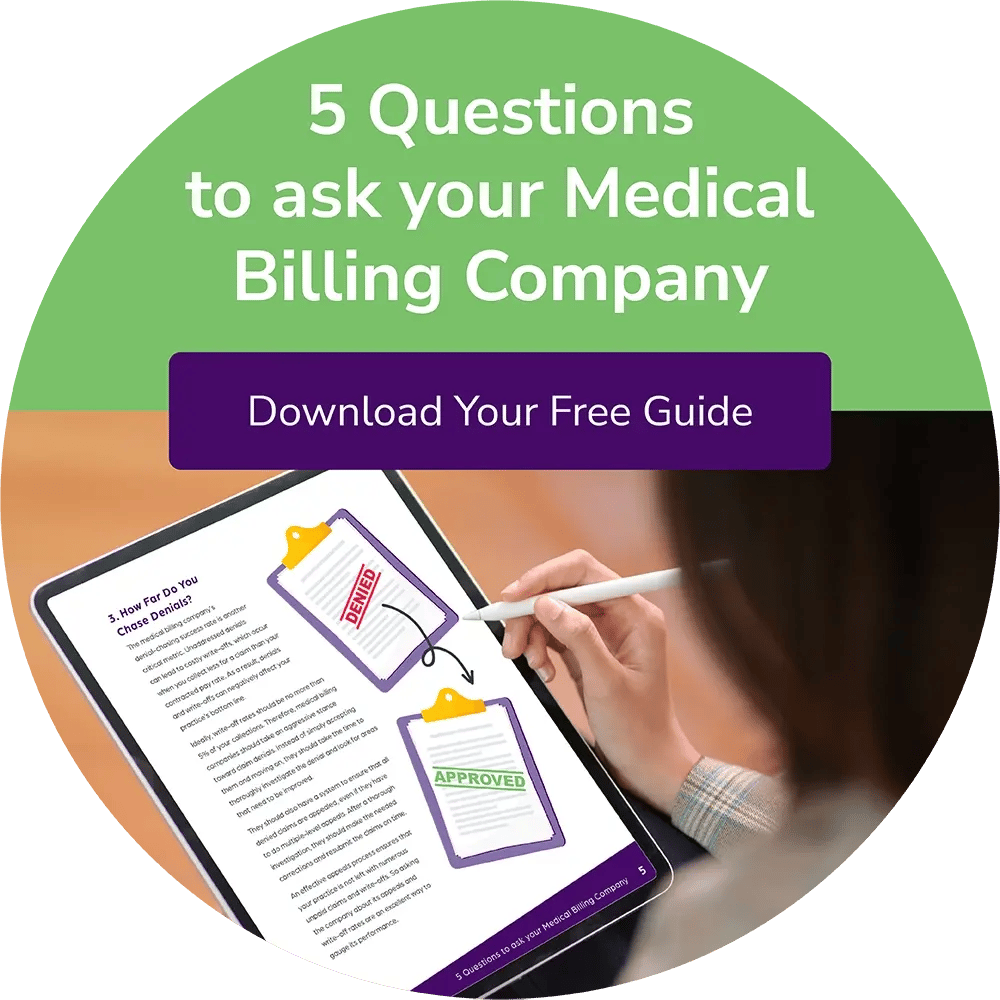Credentialing vs. Contracting: Know the Difference.

Contracting and credentialing are different but essential processes in medical billing. Insurance companies will reject claims and payments to clinicians who lack proper credentials or contract documents, and the costs are steep.
Your practice faces reimbursement delays, financial setbacks, and network or plan exclusion, ultimately leading to problems attracting patients and revenue loss. Yet, despite their importance, many clinicians aren’t clear on the differences between credentialing vs. contracting.
These two components are pivotal to your daily operations. Understanding the intricacies of each phase, the overall process, and how to find help ensures you develop an effective procedure.
What Is Credentialing in Medical Billing?
Credentialing is the process of collecting and verifying clinician qualifications with insurance payers. The process involves direct verification with medical boards, school registrars, and state licensing boards, and submitting those documents to payers for review and approval.
A credentialing check confirms:
- Your license is in good standing
- You have active professional insurance
- Your education and certifications
- Any malpractice suits and outcomes
- Any adverse clinical outcomes
- Medicare or Medicaid exclusions
- Any criminal history
The process is mandatory with payers and confirms you have the skills, training, and legal ability to provide patient care and verifies the level of care you can provide. Credentialing with payers is also the first step to becoming an in-network provider and getting paid for your services.
The credentialing phase can take anywhere from three to six months. However, managing your documents and status with a payer is also an ongoing process. You will re-credential multiple times throughout your career to update your records and verify any changes to your licenses and certifications.
If you pursue specialties or higher education, you must also confirm those changes and qualifications. For example, a nurse who becomes a nurse practitioner will need to submit and update documents to provide more advanced care.
What Is Contracting in Medical Billing?
Contracting, on the other hand, is the negotiation and enrollment process with insurers and payers. During the contracting phase, you settle on terms and reimbursement rates and enter into a legal agreement to provide X services for X rates.
Rates are generally based on a fee schedule, set by the demand for your specialty, and may vary by payer or health plan. Signing the contract means you agree to accept the contracted fee for the service as payment in full.
Once you sign, you are enrolled in the plan and become an in-network provider. The insurance company pays for in-network services according to the terms.
The contracting phase is lengthy and can take six to 12 months, depending on the payer. However, enrollment varies by the demand in your region.
Sometimes carriers decline your contract request because the network is closed, which means there are enough clinicians in the area or specialty, or the company isn’t offering new contracts. You can appeal to open the network to new clinicians, or you can wait and reapply when the demand or patient demographics change and the network opens.
Summary of Credentialing vs. Contracting Process
Credentialing and contracting are two sides of the same coin but serve a specific purpose in enrollment. A quick and simplified summary of the process consists of three stages, which must all be completed.
These stages include:
- Stage 1 - Credentialing. Identify and collect all documents and credentialing application forms. Check for errors or missing documents that may delay the process.
- Stage 2 - Application. Once you pass credentialing, you can apply to enroll with the carrier. Each company has a different process.
- Stage 3 - Contracting: The payer agrees to add you to its network, and you negotiate and agree to the payment terms. Payment for services starts as of the effective date.
Outsourcing Credentialing vs. Contracting
Every payer has a credentialing and contracting stage before approval. Many practices enroll with a maximum of payers to provide covered services to as many patients as possible. This strategy increases revenue potential and creates a smoother revenue cycle.
However, navigating a maximum number of credentialing and contracting submissions is overwhelming. Each carrier requires a copy of your license and qualifications documents, case history, criminal history, insurance certificate, and application.
Then, you must review each contract for the terms and rates and sign each. You must also keep tabs on documents, re-submit or re-attest the information periodically, and renegotiate terms and rates.
With a busy practice, managing these requirements is time-consuming and costly. Outsourcing your credentialing and contracting to a third-party medical billing provider is a simple solution.
Efficient end-to-end billing management increases accuracy and simplifies contracting. Gain easier enrollment and contract management for better revenue potential and governance.
Blog Post Tags
RCMGet Awesome Content Delivered Straight to Your Inbox!
Posts by topic
- RCM
- Medical Billing Software
- Outsource Your Medical Billing
- Compliance
- Physician Billing Services
- Denial Management
- AI
- Data Analytics
- EHR
- ERA
- reporting
- Automation
- Business
- Claim Scrubbing
- Coding
- Community
- Events
- LTPAC
- Medical Billing Companies
- Medicare
- Press Release
- Revenue Cycle Management
- business development
- clearinghouse See All See Less





